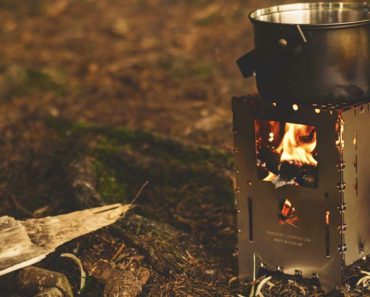To fully enjoy a camping adventure, it’s essential to begin by thoroughly researching and familiarizing yourself with the potential hazards of camping. The magnetic pull of camping is undeniable – the vast expanse of untouched wilderness, a respite from the daily hustle and bustle, just you, a tent, and nature in perfect harmony. While it might seem idyllic on paper or in television advertisements, there’s a bit more groundwork required to ensure your safety during the journey.
The initial decision to be made is the choice of your camping location, which often influences subsequent choices. Many individuals opt for a location close to their homes for convenience, while others embark on extensive journeys to discover that perfect spot. Regardless of your approach, there are certain factors to consider when selecting a camping site.
Picking the right camping spot
How remote do you want to be? Many people go camping in special places like state and national parks. Sometimes, you’re pretty close to other campers, and it feels more like a group gathering than a solo adventure. A big advantage of this kind of camping is that you’re near civilization. It’s handy if you forget supplies and need to run to the store. But there’s a downside – you won’t have much solitude or privacy.
Expect to hear other campers’ conversations and maybe see dogs wandering in from nearby camps. If you opt for backcountry camping, you need to know what you’re doing. Some places in the U.S. don’t see hikers or campers for weeks or even months. The good part is you get peace and quiet. You can enjoy nature without many distractions. But the bad part is you might be really far from civilization and help. Backcountry camping is tough, so make sure you know your camping and survival skills before you head into the wild.
What kind of place do you want to camp at? Do you want to be deep in the mountains with tall trees, or do you prefer an open beach with a campfire and crashing waves? Your choice of place will determine what gear you need. If it’s warm and open, you won’t need heavy clothes and super warm sleeping bags. But if you’re in the mountains, your gear has to match the cold climate you’ll be in. Having the right gear for your location decides how comfortable or uncomfortable your trip will be.
If you’re new to camping, here are some things to think about when picking a spot. Not all camping spots are the same. How far from civilization do you want to be? Can you build a fire if it’s allowed? Will you have cell phone service? Will you be alone or with others? Do you know how to use a compass and find your way around? Are you worried about animals? Considering these questions will help you figure out what gear and skills you’ll need for your trip.
Dealing with predator encounters
The great outdoors is undeniably beautiful, but it also comes with its share of risks. When you venture into nature, remember that you won’t be alone. From annoying mosquitoes and flies to bears and mountain lions, the wilderness is home to various wildlife. The most important thing to do is to steer clear of close encounters with these animals.
This might go against the idea of getting up close and personal with nature, which many campers desire. However, there’s a real danger in getting too close to wildlife.
Unlike the cuddly creatures often seen in movies and TV shows, wild animals are anything but friendly. They’re not interested in forming bonds with you. What they do know is that you could be a potential threat or even a tasty meal.
It’s vital to educate yourself about the types of wildlife commonly found in the area you plan to visit. Understand the best safety practices for camping in those regions and always stay alert.
Most dangerous animal encounters in the United States
The United States is home to several potentially dangerous animals that campers might encounter. While attacks are relatively rare, it’s crucial to be informed and prepared. Some of the most concerning animals include:
- Bears: Both black bears and grizzly bears can pose threats. On average, there are around 35 bear attacks reported in the U.S. each year. To protect yourself, store food securely, make noise to avoid surprising them, and carry bear spray when in bear country.
- Mountain Lions (Cougar): Mountain lion encounters are infrequent, with approximately 20 attacks reported annually. To stay safe, hike or camp in groups, make yourself appear larger if you encounter one, and avoid crouching or running away.
- Coyotes: Coyote attacks are uncommon, with around 10 reported each year. Keep your distance, especially if you see a coyote acting unusually, and don’t feed them.
- Rattlesnakes: Rattlesnake bites are more common, with about 5,000 to 8,000 bites annually in the U.S. Stay cautious, watch your step, and wear appropriate clothing and footwear when in snake-prone areas.
How Campers Can Protect Themselves:
Educate Yourself: Research the wildlife common to the area you plan to camp in, including their habits and behaviors. Understand the potential risks associated with each species.
Maintain Distance: Avoid approaching or feeding wild animals. Keep a safe distance, and use binoculars or even a camera with a powerful zoom to observe them up close without compromising safety.
Proper Food Storage: Secure your food and trash to prevent attracting animals to your campsite. Use bear-resistant containers or hang food in bear bags.
Travel in Groups: When hiking or camping, it’s safer to be in a group. Predators are less likely to approach larger numbers of people.
Carry Bear Spray: If you’re in bear country, consider carrying bear spray, which can deter bears in case of close encounters.
Stay Vigilant: Remain alert and aware of your surroundings. Pay attention to signs or warnings about wildlife in the area.
By following these guidelines, you can enjoy the beauty of nature while minimizing the risks associated with encounters with potentially dangerous animals.
Going into the wilderness unprepared can get you killed
Venturing into the wilderness unprepared can pose serious risks to your safety. What you choose to pack can turn your trip into an unforgettable experience, either positively or negatively. While specific environments may require additional gear, there are fundamental items that should always be part of your backcountry expedition.
Shelter: Your choice of shelter can range from tents to hammocks. The right one depends on your camping style and the environment you’ll be in. Ensure it’s durable and weather-appropriate.
Sleeping Pad: Contrary to cinematic depictions, sleeping on the ground can be uncomfortable. A quality sleeping pad not only provides comfort but also insulation from the cold ground, ensuring a good night’s sleep.
Maintain Body Heat: Your choice of a sleeping bag is crucial. It should be versatile and capable of withstanding the challenges of any camping environment, from chilly mountains to sweltering deserts. Select a sleeping bag with an appropriate temperature rating for the climate you’ll encounter. Look for quality insulation, material, and packability.
First Aid: While some may suffice with a basic first-aid kit, it’s advisable to carry a comprehensive one. In the wilderness, accidents can happen, and injuries need immediate attention. The farther you are from civilization, the more critical a well-equipped first-aid kit becomes. A comprehensive first-aid kit should include bandages, antiseptics, medications, splints, and instructions for basic medical care. Customize it to suit your specific needs.
Light The Way: Nightfall in the wilderness can be profoundly dark, especially far from urban areas. You’ll encounter minimal light pollution, and moonless nights are pitch black. Carrying a reliable flashlight or headlamp is essential for safety and navigation. Headlamps are often more practical as they free up your hands for other tasks. Carrying extra batteries is essential for extended trips.
Safety from Wildlife and Humans: Depending on your location, carrying a sidearm may be allowed or even recommended. A reliable handgun can provide protection against both animal predators and potential human threats, particularly as you venture deeper into the wilderness. If you choose to carry a firearm, ensure you’re well-trained in its use and familiar with local regulations. Bear spray can also be effective against wildlife encounters.
Remember that each wilderness journey is unique, so research the specific requirements of your destination and be prepared accordingly. Your safety and enjoyment in the great outdoors depend on the gear you bring and how well you use it.
Foraging in the wilderness: Know what you’re eating before it’s too late
Foraging for edible plants and fruits can be an exciting part of your wilderness adventure, but it’s crucial to distinguish between safe and harmful options. Eating the wrong plant or fruit can lead to serious health issues, so it’s essential to be well-informed.
Identifying Edible Plants: Before you set out to forage, educate yourself about the edible plants and fruits in the area you’ll be exploring. Field guides, apps, and local experts can be valuable resources for identifying safe options. Pay close attention to key features like leaf shape, color, and smell. Keep in mind that some edible plants have poisonous look-alikes, so be absolutely certain before you consume anything.
Common Poisonous Plants: In the United States, some common poisonous plants to watch out for include poison ivy, poison oak, and poison sumac. While these plants might not be directly ingested, touching them can lead to severe skin rashes and irritation.
What to do If you’ve eaten a poisonous plant or fruit:
If you suspect that you’ve consumed a plant or fruit that may be harmful, take the following steps:
Stay Calm: Panic can exacerbate the situation. Try to remain as calm as possible.
Identify the Plant: If you’re certain you’ve ingested a harmful plant, try to identify it to the best of your ability. This information can help medical professionals provide appropriate treatment.
Do Not Induce Vomiting: Contrary to popular belief, inducing vomiting is not always the right course of action. For some toxic plants, it can worsen the situation. Follow specific advice for the plant you’ve ingested if available.
Seek Medical Help: Contact a healthcare professional or poison control center immediately. They can provide guidance and advice on the specific plant or fruit you’ve encountered.
Drink Water: If advised by a medical expert, drinking water may help dilute the toxins in your system.
Prevention is the best defense against foraging mishaps. Always err on the side of caution when foraging and consuming wild plants and fruits. A guided foraging tour or consultation with a local expert can be a safe way to explore the edible offerings in your chosen wilderness destination.




























